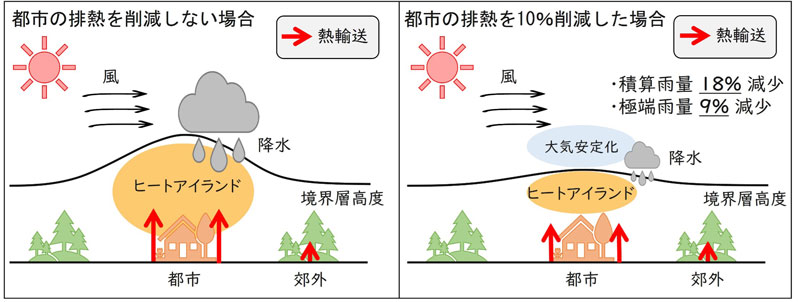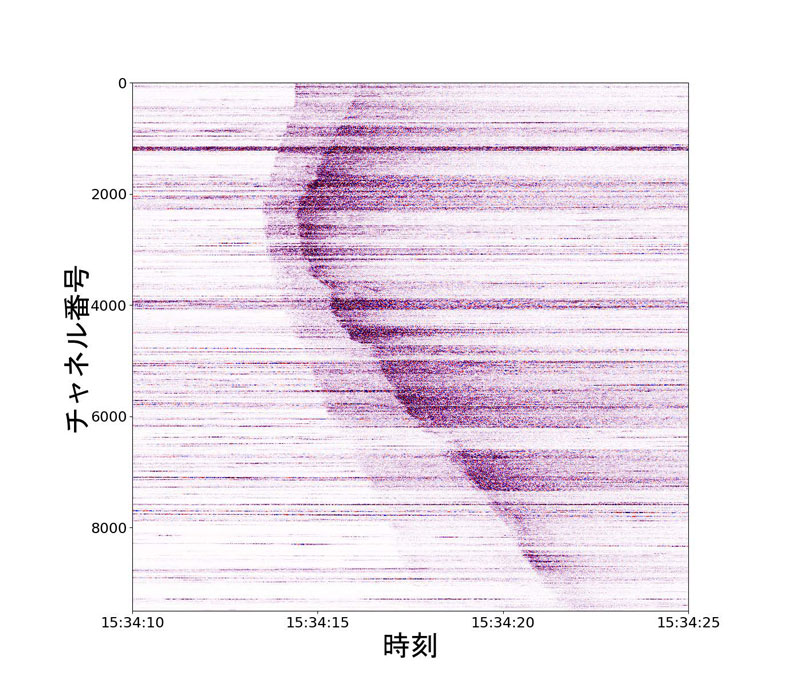2025-05-13 京都大学

<関連情報>
- https://www.kyoto-u.ac.jp/ja/research-news/2025-05-13
- https://www.kyoto-u.ac.jp/sites/default/files/2025-05/web_2505_Takemi-80bd587eddfe5a4b7eb5a5668f867637.pdf
- https://link.springer.com/article/10.1007/s00704-025-05509-9
地表面顕熱フラックスの変更が大阪市街地の夏季局地降水量に及ぼす影響 Effects of modifying surface sensible heat flux on summertime local precipitation in urban areas of Osaka, Japan
Kenta Irie & Tetsuya Takemi
Theoretical and Applied Climatology Published:12 May 2025
DOI:https://doi.org/10.1007/s00704-025-05509-9
Abstract
Cumulonimbus clouds that develop rapidly during summertime afternoons can cause local heavy precipitation and local flooding, particularly in urban areas. This study examines the potential to mitigate the severity of urban precipitation by reducing sensible heat flux (SHF). Large SHF characterizes urban areas due to anthropogenic factors such as heat emissions from buildings and roads, leading to the urban heat island effect. To assess the impact of SHF reduction, numerical simulations for an afternoon precipitation event in Osaka, Japan were conducted using the Weather Research and Forecasting (WRF) model. The nesting capability was used to increase the horizontal resolution to 0.5 km in the innermost domain. SHF reduction experiments were conducted by varying the reduction levels of SHF against no-reduction experiment (CTL) (ranging from 50 to 90% of CTL) and the size of the region of SHF reduction (the entire innermost domain, only urban grids of the innermost domain, and urban grids within a 20 km box of innermost domain). We created CTL and 15 types of reduction experiments with 8 ensemble members initialized at different times for each and a total of 128 members were created. The control experiment (CTL) reproduced the actual afternoon precipitation event. Results showed that SHF reduction experiments suppressed accumulated and peak precipitation in most cases compared to CTL. Extreme precipitation events, defined as precipitation above the 99.9th percentile value in CTL, were also less frequent in most cases. The most practical reduction experiment, 10% reduction level in the 20-km box area, resulted in a decrease of 18% in accumulated precipitation, 13% in peak precipitation, and 9% in the 99.9th percentile value of precipitation. These findings indicate that the reduction of SHF would stabilize the lower troposphere and hence would lead to reducing cloud formation and precipitation. This study demonstrates a potential for reducing SHF as a measure to mitigate urban precipitation under accelerating urbanization.



